In Holyrood Park, where Edinburgh’s historic landscape meets the wild, nature asserts itself in dramatic form. Rising 251 meters (823 feet) above the city, Arthur’s Seat is no ordinary hill.
It is the weathered remnant of an ancient volcano, sculpted by ice and wind—a rugged wilderness overlooking Scotland’s capital. To stand atop its summit is to see Edinburgh not only as a city of stone and history but as a landscape shaped by forces older than civilization itself.
For centuries, Arthur’s Seat has been many things—a royal hunting ground, a battlefield, a source of legend.
One of Edinburgh’s seven traditional hills, it is now a sanctuary where kestrels hover over wild grasslands, where city dwellers escape into windswept silence, and where every step across its undulating ridges is a journey through deep time.
Table of Contents
Seven Hills of Edinburgh
| Hill Name | Height (m) | Height (ft) | Notes |
|---|---|---|---|
| Arthur’s Seat | 251 | 823 | The highest of the seven, an ancient volcano with several summits. |
| Braid Hills | 213 | 699 | Popular for hiking and scenic views of the city. |
| Blackford Hill | 164 | 538 | Home to the Royal Observatory, with great views. |
| Corstorphine Hill | 161 | 528 | A ridge offering stunning views of Edinburgh and surrounding areas. |
| Craiglockhart Hill | 158 | 518 | A hill southwest of the city, also offering panoramic views. |
| Castle Rock | 130 | 430 | A volcanic plug, home to Edinburgh Castle. |
| Calton Hill | 103 | 338 | Known for its monuments and panoramic city views. |
Born of Fire and Ice
Arthur’s Seat is a relic of Earth’s violent past. Some 340 million years ago, during the Carboniferous period, Scotland lay near the equator, a land of vast swamps and towering ferns. Beneath the surface, magma surged through fractures in the Earth’s crust, forcing molten rock skyward.
One such eruption birthed Arthur’s Seat, part of a chain of volcanoes that once dotted the Scottish landscape. But the peak we see today is not the peak of that ancient volcano in its prime—it is its eroded remains.
The ice ages that followed ground down the land, as glaciers scraped across the surface, carving valleys and smoothing ridges. The result is a striking “crag and tail” formation: a sheer volcanic cliff on one side, trailing a long, gentle slope of softer rock. Edinburgh Castle’s perch atop Castle Rock shares the same origins.
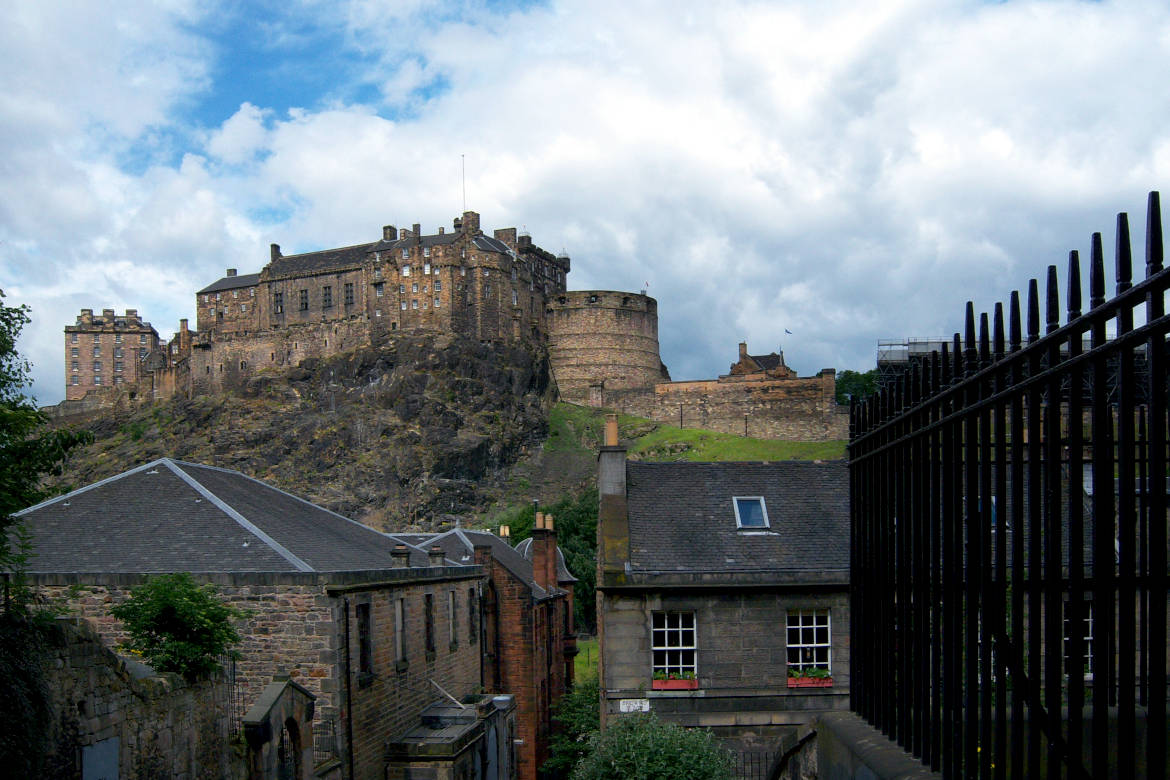
Edinburgh Castle: Scotland’s Most Famous Fortress
Dramatically perched atop Castle Rock, Edinburgh Castle is Scotland’s most famous fortress, with origins dating back to at least the 12th century when King David I established a royal stronghold.
This rugged terrain, now part of Holyrood Park, a 260-hectare or 650-acre expanse of moorland and rocky outcrops, makes Arthur’s Seat one of the most distinctive natural features of any European capital. Nowhere else does a city skyline surrender so swiftly to the wild.
A Mountain of Legends
For all its geological might, Arthur’s Seat is not just a mountain—it is a keeper of stories. Its name has long been linked to King Arthur, though no historical record confirms such a connection. Some claim this was Camelot, a notion as romantic as it is improbable.
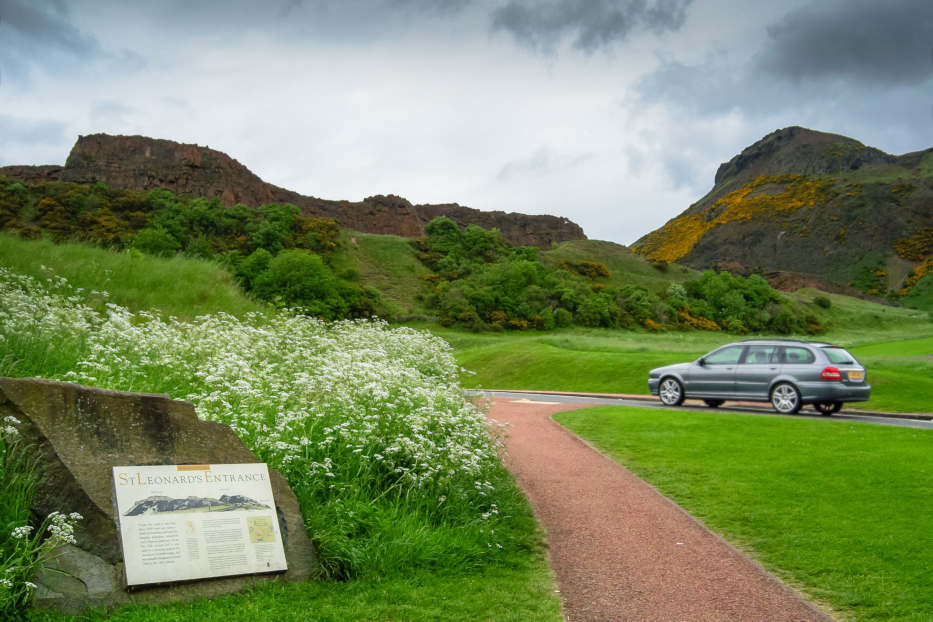
Others suggest a Gaelic origin—Àrd-na-Said, meaning “Height of Arrows,” a possible nod to ancient battles or hunting grounds. Legends cling to its slopes.
In 1836, schoolboys exploring a rocky crevice made a macabre discovery: seventeen miniature coffins, each containing a tiny carved figure, arranged in three neat rows. Their purpose remains a mystery.
Were they part of a lost ritual, a tribute to the dead, or linked to Edinburgh’s infamous body snatchers, Burke and Hare? To this day, the coffins reside in Edinburgh’s National Museum of Scotland, their secrets intact.

The Quiet Charm of Dunsapie Loch, a Peaceful Escape in Edinburgh
Dunsapie Loch, lying by the extinct volcano of Arthur’s Seat, is a place of quiet beauty throughout the year, offering a unique experience in each season.
Arthur’s Seat has also borne witness to darker chapters of history. In the 16th and 17th centuries, Scotland was gripped by a fear of witches. Women accused of witchcraft were brought to these slopes, and forced to confess under torture before being burned at the stake.
The wind that rushes through these gullies carries echoes of their lost voices—a sobering reminder of the cruelty hidden beneath Edinburgh’s grandeur.
Wildlife in the City’s Shadow
Despite its proximity to Scotland’s bustling capital, Arthur’s Seat teems with life. Wildflowers blanket its slopes—purple devil’s-bit scabious, bright yellow tormentil, and delicate harebells swaying in the wind.

In autumn, the moorland blushes russet and gold, a final burst of color before winter’s grip tightens. Above, peregrine falcons nest in the craggy cliffs, their sharp cries piercing the morning air.
These apex predators, once on the brink of extinction in the UK, have found sanctuary in Edinburgh’s rocky heights, hunting pigeons over the rooftops below. At dusk, red foxes emerge from hidden dens to roam the parkland, while rabbits dart among the gorse bushes, their white tails flashing in the twilight.
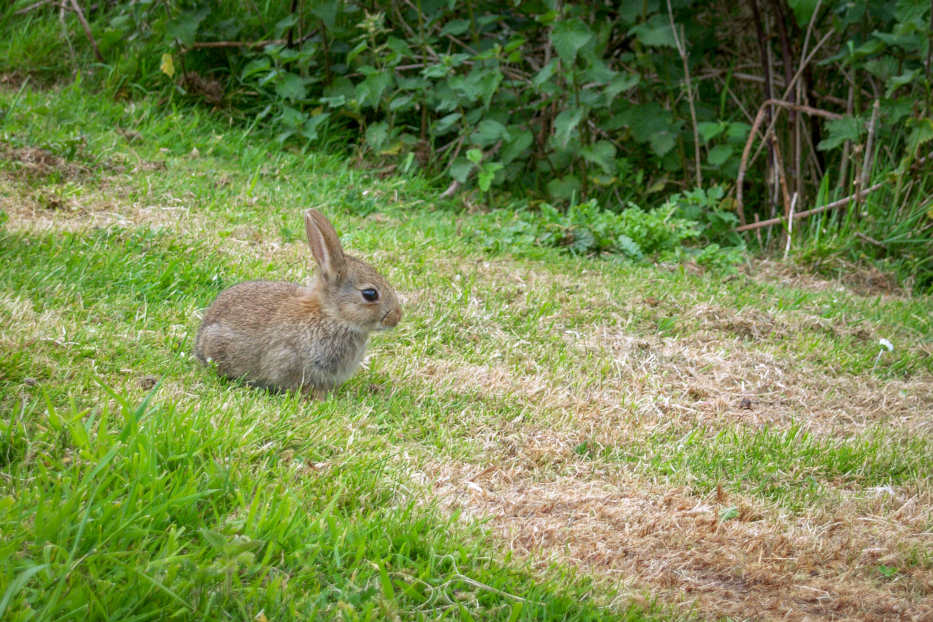
Even in the depths of the city, nature persists. And Arthur’s Seat, with its wild slopes and volcanic bones, remains its stronghold.
A Climb Through Time
To climb Arthur’s Seat is to walk through epochs. The most direct ascent is steep, a scramble over exposed rock and loose scree, where the wind tugs at jackets and the city falls away with each step.
Other paths meander more gently through Holyrood Park, past the ruins of St. Anthony’s Chapel, a medieval hermitage that once stood sentinel over travelers heading to and from Holyrood Abbey.
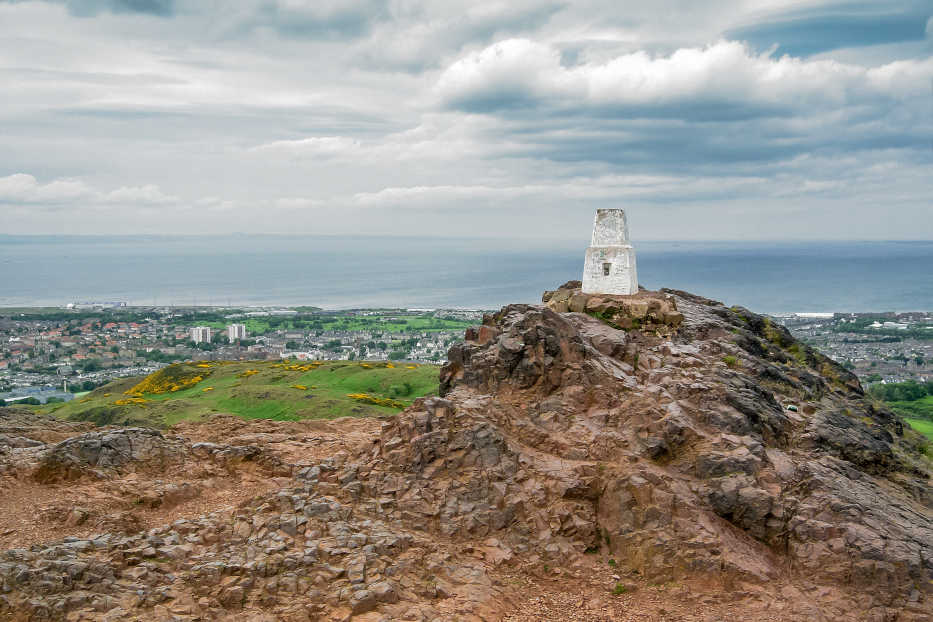
The final push to the summit is exhilarating. As the last ridge is crested, the view unfurls—Edinburgh Castle perched on its volcanic crag, the orderly streets of New Town stretching toward the distant Firth of Forth, and beyond, on clear days, the hazy silhouette of the Highlands.
The wind at the top is relentless, a reminder that this peak, though now tamed by footpaths and hikers, was once at the mercy of fire and ice.
A Landscape That Endures
Arthur’s Seat is more than just a hill—it is a striking symbol of Edinburgh’s dual identity. It is a city of stone and civilization, yet also one where nature refuses to be subdued.
It is a place where the past lingers in the wind, where myths take root in rocky gullies, and where the ancient pulse of the Earth still feels close beneath the surface.
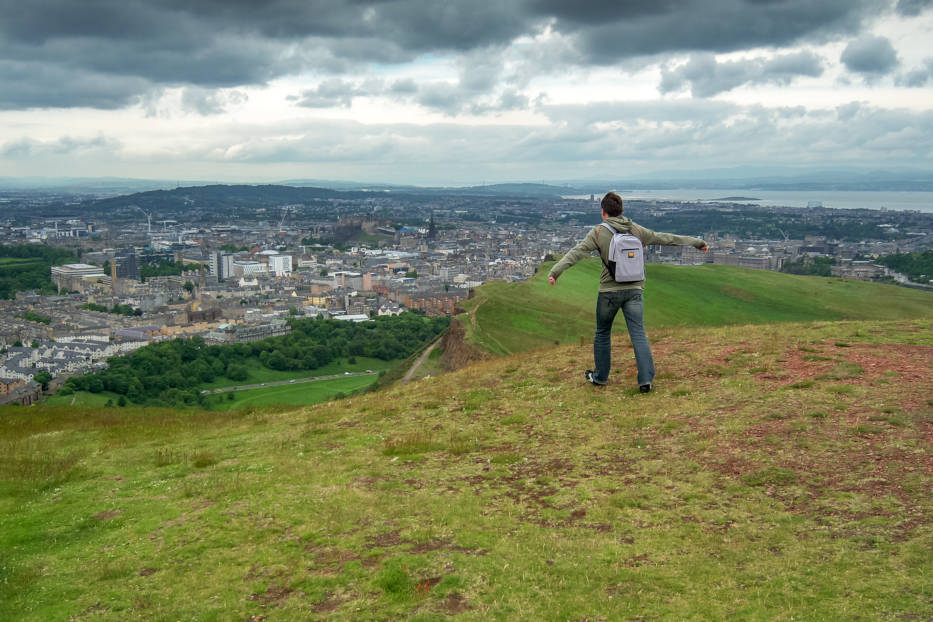
To stand atop this volcanic relic, high above the rooftops and spires, is to see Edinburgh not just as a city, but as a living landscape—one where time moves differently, where history is written in rock, and where, even in the heart of Scotland’s capital, the wild endures. And there, beneath the shifting skies, Arthur’s Seat keeps its watch.
